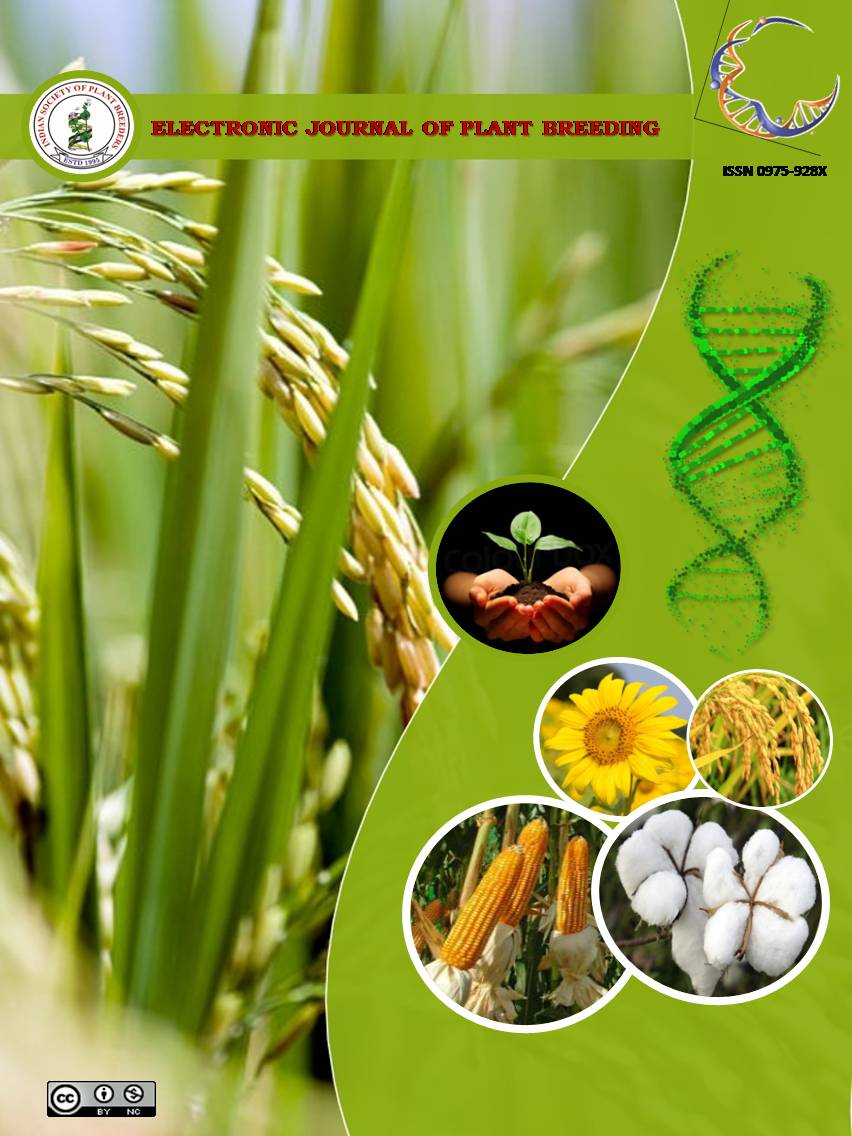Trait’s association, cause and effect analyses in Indian mustard [Brassica juncea (L.) Czern & Coss]
Abstract
In a study carried out with 71 genotypes of Indian mustard under sub-Himalayan condition during rabi 2017-18, it was found that all the genotypes differed significantly for yield and its attributing traits. Both GCV and PCV were found to be higher for height up to first fruiting branch, aphid count and penetration force indicating high variability in the genotypes. High heritability along with high genetic advance was observed for height up to first fruiting branch, primary branches per plant, secondary branches per plant, siliquae per plant and 1000 seed weight. The trait association study revealed that secondary branches per plant and siliquae per plant had positive significant association with seed yield per plant. Path coefficient analysis indicated that penetration force exhibited the highest direct effect on seed yield. Siliquae per plant and secondary branches per plant exhibited high direct positive effect and positive association with seed yield per plant. On the basis of all the eleven traits taken together, the genotype PRD-2013-9 (rank-1) was the best.

It is certified that:
- The corresponding author is fully responsible for any disputes arising due to the publication of his/her manuscript.
- The article has been seen by all the authors who are satisfied with its form and content.
- The sequence of names of authors in the by-line is as per their relative contribution to this experiment, giving due credit to all scientists who made notable contribution to it.
- All the authors fully understand that inclusion of any other co-authors or exclusion of any co-authors is not possible once the article has been submitted to the journal.
- The corresponding author takes full responsibility for this article.
- The address of the organization where the research was conducted is given.
- The article is exclusive for this journal, and the results reported here have not been sent (and will not be sent during its consideration by this journal) for publication in any other journal.
- Authors agree to abide by the objective comments of referees and do agree to modify the article into a short note as per the recommendation, for publication in the Electronic Journal of Plant Breeding.
- If published in Electronic Journal of Plant Breeding, the copyright of this article would vest with the Indian Society of Plant Breeders, who will have the right to enter into any agreement with any organization in India or abroad engaged in reprography, photocopying, storage and dissemination of information contained in it, and neither we nor our legal heirs will have any claims on royalty.


